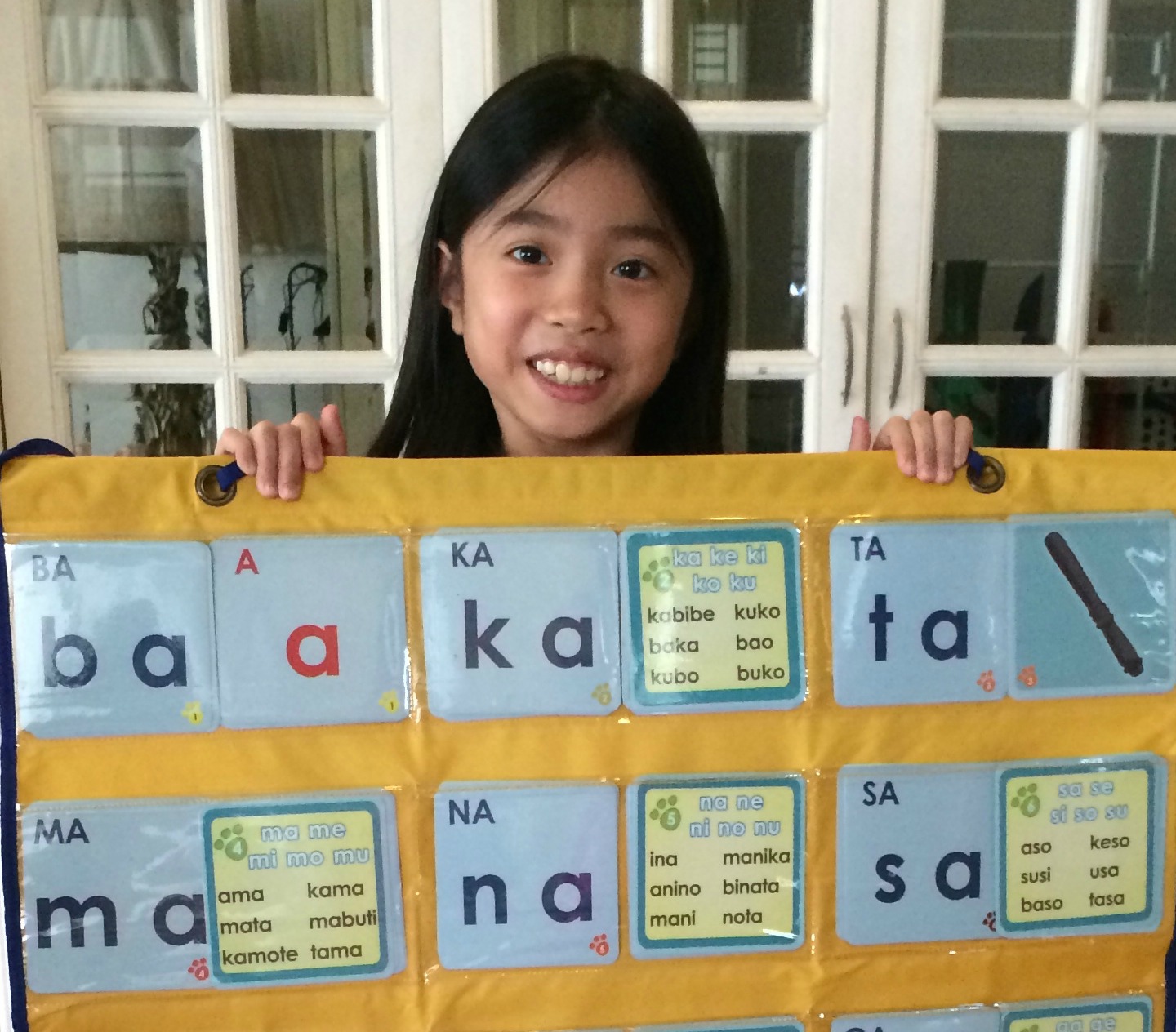Teacher Tisha Gonzalez Cruz’s Learning Lion has created the Alpabasa, a helpful teaching aid
Whether it’s keeping up with their subject in school or just simply being able to understand the language, most kids have a difficult time learning Filipino with most parents not knowing exactly how to go about teaching them!
That Filipino kids are less exposed to the language may have something to do with this dilemma. Paolo Paculan, a professor who came up with modules to help kids learn Filipino the fun way, observes, “They don’t have the rich exposure to the Filipino language and Filipino culture that their parents had.”
Today’s kids may have 24 /7 access to foreign cable channels, but they’re not as exposed to Filipino music. Today’s kids may know how to navigate complicated video games, but they rarely have a chance to go out in the street and meet new friends who spoke Filipino.
Vanessa Bicomong, president of The Learning Library, adds that many well-meaning parents speak to their children exclusively in English to “give them an edge.”
The Filipino curriculum in schools also poses some challenges. As it was written for native-language speakers, Vanessa says, it assumes certain proficiencies, which some students just do not have. Students thus get frustrated very early on and become less receptive to learning the language.
The good news is that changes are ongoing in the school system. Private groups are also working at making learning Filipino an enjoyable experience for children. Teacher Tisha Gonzalez-Cruz of Learning Lion has created Alpabasa, syllable cards which help kids master individual letter sounds. These cards not only help increase your children’s vocabulary skills, they’re also veritable tools for playing games and singing songs in Filipino.
In the meantime, you can help your kids learn Filipino at home with the following tips from Vanessa:
* If your child is in grade school, build his vocabulary by teaching him three Filipino words a day. Ask him to write the words in a journal so that he can review them on a regular basis.
* If your child is in middle school, read age-appropriate Filipino stories with him. Discuss them in Filipino. Ask him to write a short summary, paying attention to his grammar and word use.
* If your child is in high school, help him see the relevance of the Filipino literature they are discussing in school by relating it to his own personal experience. For example: “If Rizal were alive today, what social problems do you think he would write about?”
We must, however, go beyond just making sure our children get good grades in Filipino. We have to make that conscious effort to ensure that our children learn and love Filipino. Here, some words of wisdom from Paolo:
* Speak Filipino. Let them experience Filipino culture. Give Filipino the advantage of first contact—let them learn the Filipino names of things first.
* Insist that they speak Filipino.
* It’s not just about grades. It’s about giving our kids a sense of rootedness, giving them something that no one else in the world has. In the global marketplace, it’s not about what you can do that everyone else can do. It’s about what sets you apart; that’s what having a Filipino upbringing can give you.
* Be proud of your own language and heritage as a Filipino. Kids learn by osmosis. If you tell your kid, “Ano ba ‘yan? Filipino lang binagsak mo pa?” or “Di na kailangan ‘yan ngayon!”, what do you think would happen to your kid’s motivation to learn?


Hello! I came across this article as I was doing research for my thesis. May I know who wrote this? I would like to cite it, if I may. Thanks in advance!